Ibike Korea People-to-People Program
 Photo essay: Wando to
Jejusi (or Cheju)
Photo essay: Wando to
Jejusi (or Cheju)
Morning ferry, afternoon exploring Jeju City
Points of Interest: Jeju Folk and Natural History Museum, Samseonghyeol, Refugee
Ship Exhibit, market

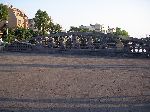
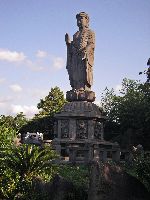
According to legend, the forefathers of the Ko, Yang and Boo clans emerged from caves near the center of what is now Jeju City. The became the original Jeju islanders. They supposedly lived by hunting until they married three princesses of the Byeongnang Kingdom, who taught them agriculture. It is said that they founded the Tamna Kingdom. In 1526, King Jungjong, had an altar, a crimson gate and a wall erected around the caves and began offering spring and autumn memorial services. This ceremony for the founders of the island continue to this day.
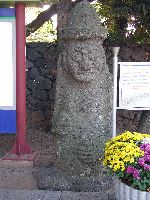
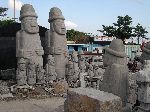 These dolhareuban stone statues, unique to and the
symbol of Jeju, are also called Useokmok, Museokmok, or Beoksumeori. There
were originally places at the entrance to fortresses on Jeju, playing the role
of guardians. At present, there are 45 true dolhareubangs on Jeju Island
-- and thousands of miniature copies available for purchase by tourists.
The stone statue is commonly adorned with a helmet-style hat with bulging eyes,
a fat nose, clenched lips and two hands on the upper and lower part of the
belly. Most of the original dolhareubang are estimated to have been made
in 1754. You can also buy new ones in the size of your choice.
These dolhareuban stone statues, unique to and the
symbol of Jeju, are also called Useokmok, Museokmok, or Beoksumeori. There
were originally places at the entrance to fortresses on Jeju, playing the role
of guardians. At present, there are 45 true dolhareubangs on Jeju Island
-- and thousands of miniature copies available for purchase by tourists.
The stone statue is commonly adorned with a helmet-style hat with bulging eyes,
a fat nose, clenched lips and two hands on the upper and lower part of the
belly. Most of the original dolhareubang are estimated to have been made
in 1754. You can also buy new ones in the size of your choice.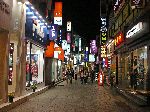
 Please
contact us if you would like to be added to
Ibike's mailing list or have questions, comments, corrections or criticism. (Also, please let us know how you learned about us and
found this site.) Privacy policy.
Please
contact us if you would like to be added to
Ibike's mailing list or have questions, comments, corrections or criticism. (Also, please let us know how you learned about us and
found this site.) Privacy policy.
![]() IBF Homepage
IBF Homepage ![]() Ibike Programs
Ibike Programs
![]() Ibike Schedule
Ibike Schedule
![]() Search
Search



